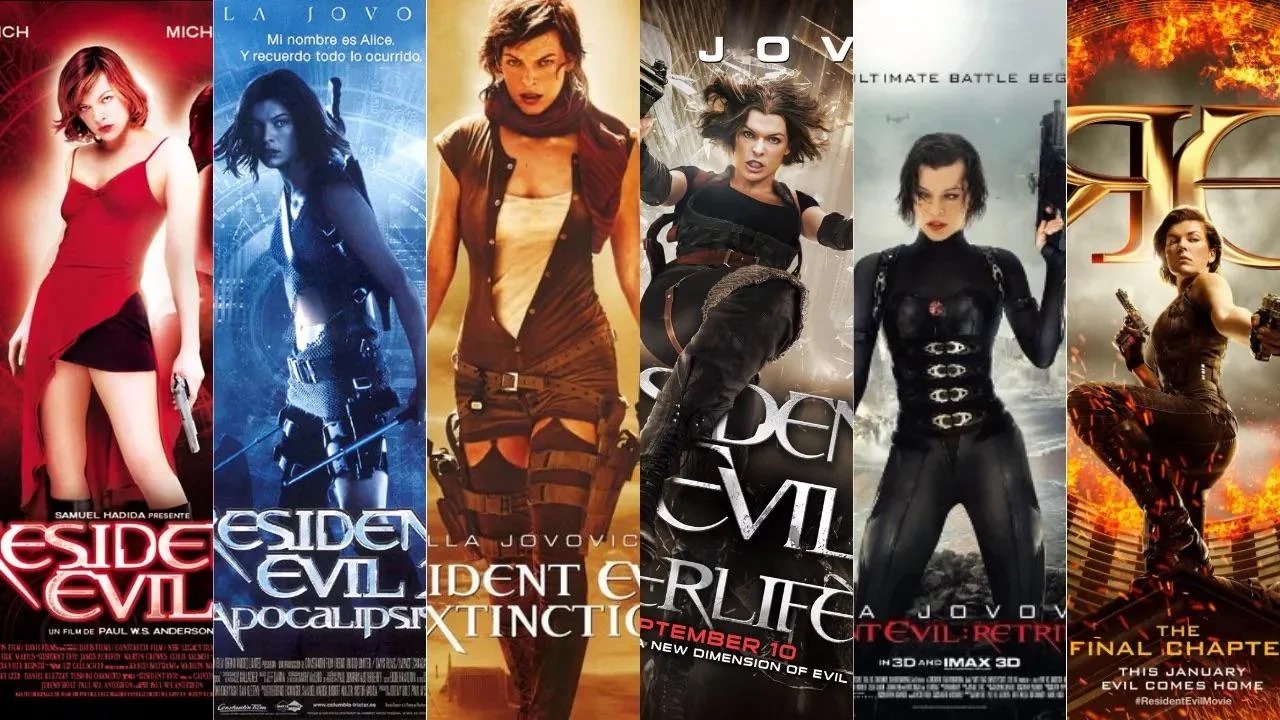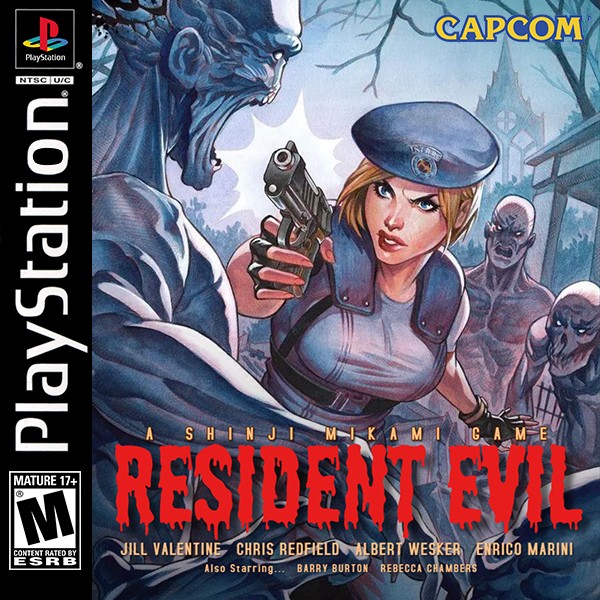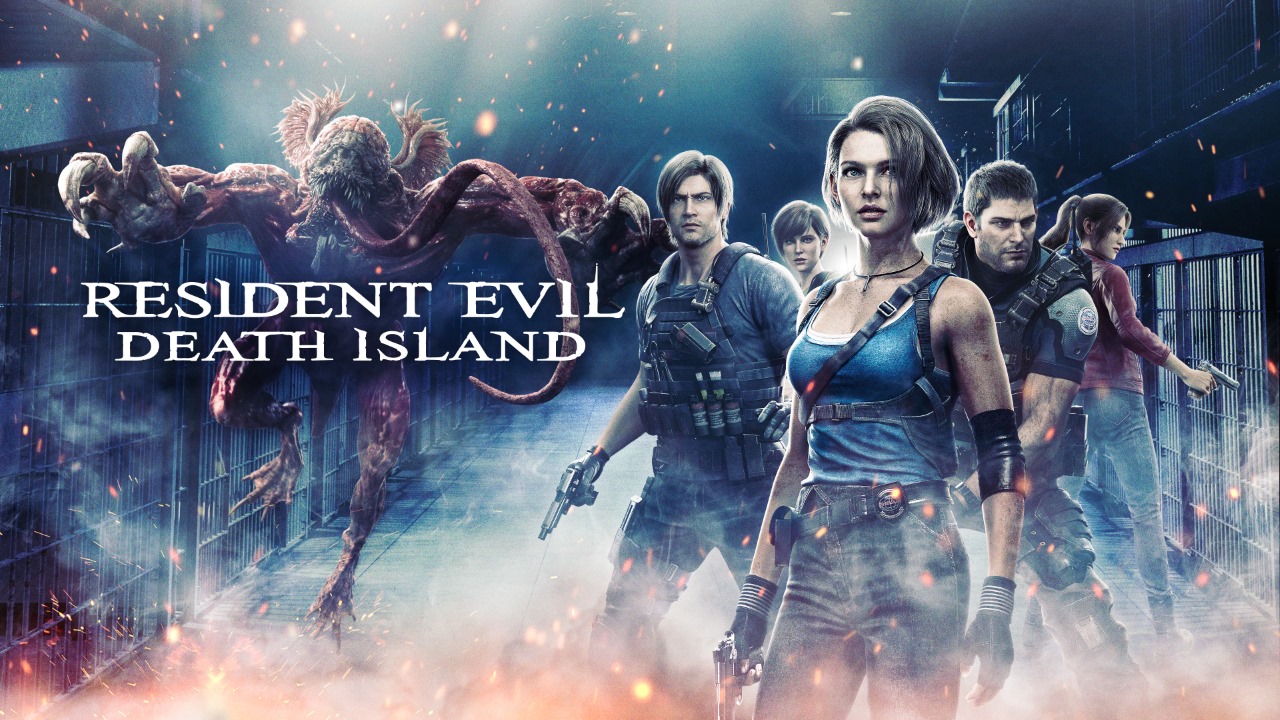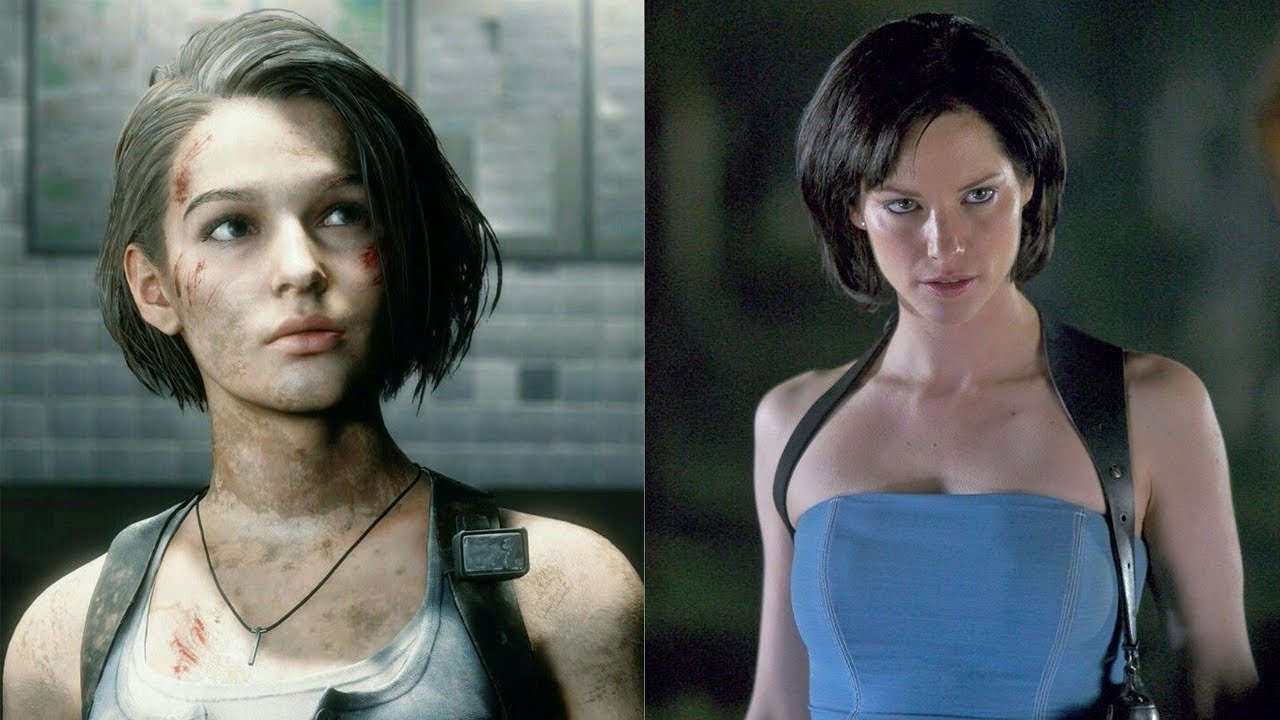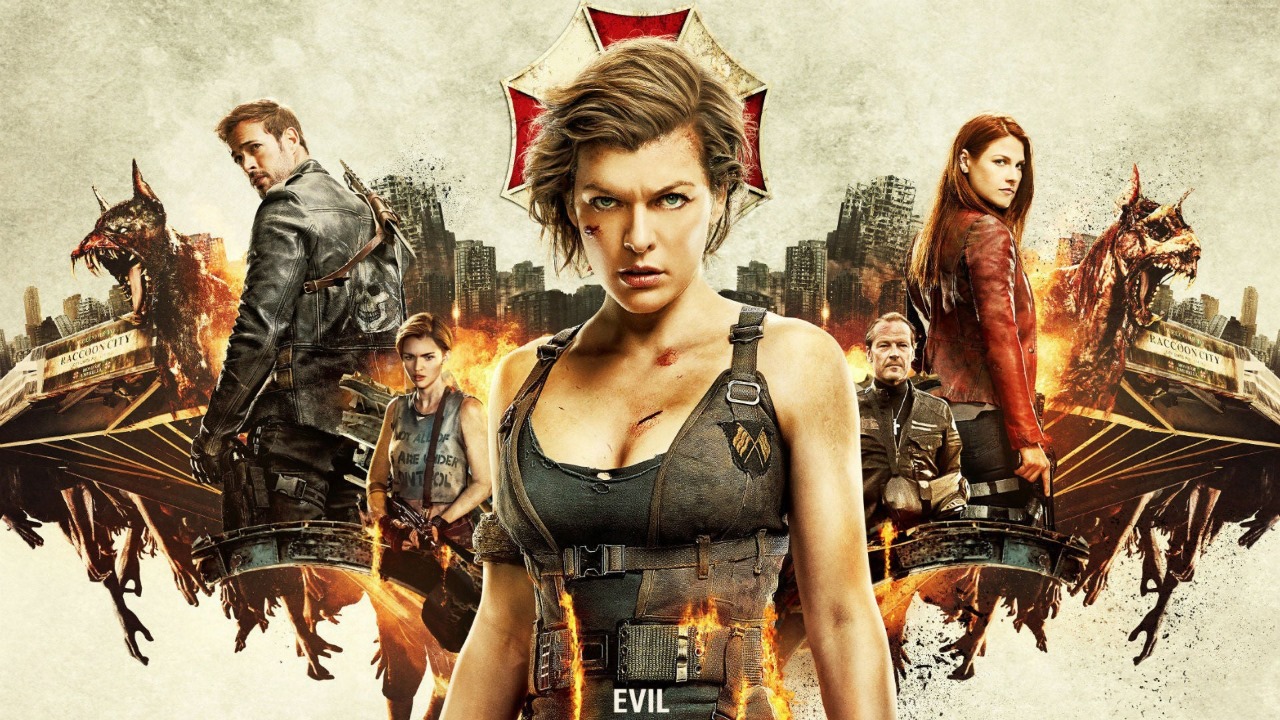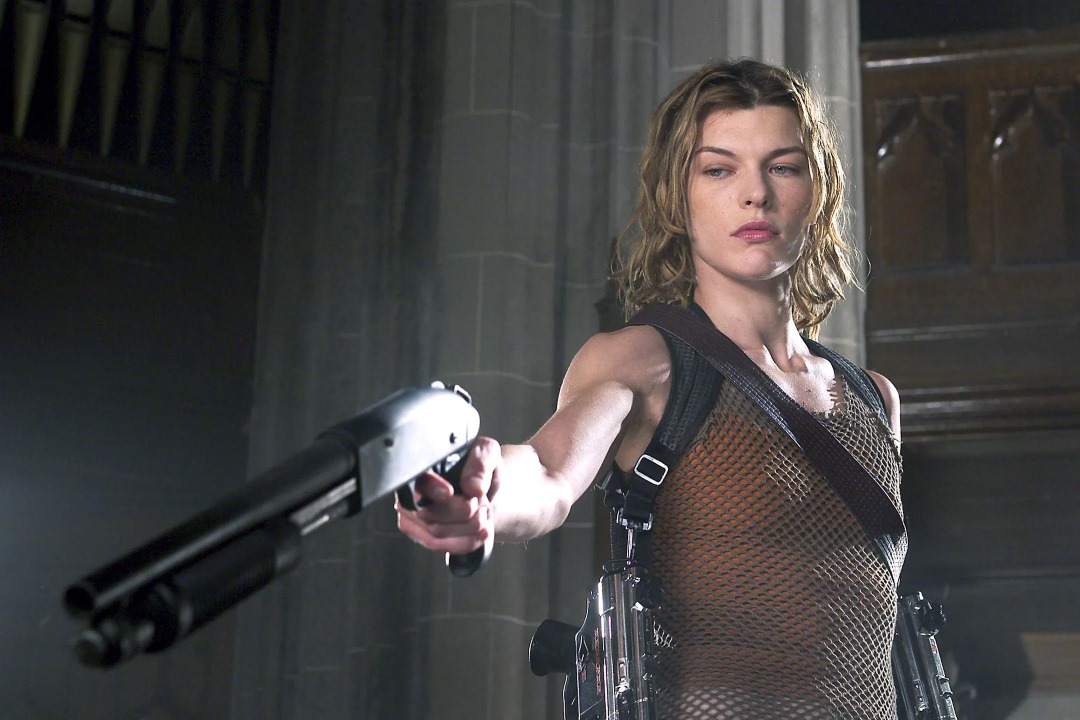In the pantheon of video game-to-movie adaptations, few franchises have had as lasting and widespread an impact as Resident Evil. What began as a slow-paced, fixed-camera survival horror game in 1996 evolved into a global entertainment phenomenon. Capcom's iconic franchise—with its zombies, bio-organic weapons, and the enigmatic Umbrella Corporation—didn’t just define a genre, it launched one. Naturally, Hollywood saw potential in the eerie corridors of Spencer Mansion and the infested streets of Raccoon City.
But instead of a direct adaptation of the original game, the Resident Evil film series carved its own narrative path—often running parallel to, rather than alongside, the source material. Over the course of more than two decades, the franchise has spanned six live-action theatrical releases, four high-quality animated features, and multiple reboots and spinoffs, with more on the horizon. This article explores each of those entries, their relationship to the games, and the broader cultural legacy left behind by one of gaming’s most famous horror franchises.
Origins of Resident Evil: From Console to Cinema
The original Resident Evil game, developed by Capcom and directed by Shinji Mikami, was released for the PlayStation in 1996. It blended claustrophobic level design with limited resources, puzzle solving, and grotesque enemy design to create a terrifying experience unlike anything before it. The fixed camera angles, chilling music, and item-based progression gave it the feel of a playable horror film.
The early games drew inspiration from George A. Romero’s Night of the Living Dead and other cult horror flicks. Ironically, Romero himself was briefly attached to a Resident Evil film adaptation in the late 1990s, but Capcom rejected his script. Instead, the project was handed to British filmmaker Paul W.S. Anderson, who had directed the cult sci-fi film Event Horizon. Rather than adapt the game's characters and plot directly, Anderson opted to tell an original story set in the same universe, creating a brand-new protagonist named Alice and launching a separate timeline that would become the backbone of the live-action series.
The choice was bold—and controversial. Hardcore fans were divided, but the general audience responded. Over time, the film series grew into the most commercially successful video game movie franchise ever made, grossing over $1.2 billion globally.
Resident Evil (2002)
The first live-action Resident Evil film was released in 2002. Directed by Paul W.S. Anderson and starring Milla Jovovich as Alice, the film introduced audiences to a secret underground lab called "The Hive," where a viral outbreak turns employees into zombies. A military team is sent in to investigate, with Alice—who wakes up with amnesia—gradually discovering the extent of the Umbrella Corporation’s twisted experiments.
The film borrows core concepts from the games: the T-virus, the Red Queen AI, and of course, the Umbrella Corporation. But it doesn't feature familiar game characters like Chris Redfield or Jill Valentine. Instead, it focuses on original creations, building its own lore around the iconic setting. The tone is less survival horror and more action-thriller, with fast pacing, lots of gunfire, and a high-tech aesthetic that feels closer to The Matrix than Resident Evil 1.
Critics gave mixed reviews, noting the plot’s simplicity and uneven character development. But fans appreciated the visual style, atmospheric sets, and the faithful creature design—particularly the zombie dogs and Lickers. The final act, in which Alice faces off against the Red Queen and the newly mutated Matt, hints at the evolution-heavy themes that would dominate later films.
Commercially, the film was a hit, earning over $100 million worldwide on a $33 million budget. More importantly, it laid the foundation for a new kind of video game movie—one that didn’t need to mirror the source material beat-for-beat, but instead could build something adjacent and uniquely cinematic.
Resident Evil: Apocalypse (2004)
The second installment, Resident Evil: Apocalypse, arrived in 2004 and leaned harder into video game elements. It introduced fan-favorite characters like Jill Valentine (played by Sienna Guillory) and Carlos Oliveira (Oded Fehr), while bringing the outbreak to the surface in a ruined Raccoon City. With a script by Anderson and direction from Alexander Witt, the sequel attempted to balance its newly introduced fan-service with its established original characters.
The film borrows heavily from Resident Evil 3: Nemesis, including the introduction of the hulking bioweapon Nemesis—portrayed with a combination of practical effects and stunt work. This version of Nemesis was one of the most memorable antagonists in the live-action series, with scenes echoing the relentless pursuit that defined the game.
Narratively, Apocalypse is more chaotic. The pacing is relentless, with heavy action sequences and stylized slow-motion gunfights. There are clear nods to the source material: Jill’s outfit matches her game appearance, and settings like the Raccoon City hospital and police department feel lifted directly from RE3. Still, the focus remains on Alice, who by this point has developed superhuman abilities—an element that pushed the series increasingly toward science fiction action and away from traditional horror.
The film made nearly $130 million worldwide, showing there was still an appetite for Anderson’s version of the Resident Evil universe. For fans, it was a mixed bag: exciting to see Jill and Nemesis on screen, frustrating to watch game characters sidelined in favor of the original protagonist.
Resident Evil: Extinction (2007)
By the time Extinction arrived in 2007, the series had taken a post-apocalyptic turn. Directed by Russell Mulcahy (Highlander), this entry takes place in a Mad Max–style wasteland where the T-virus has ravaged the Earth, leaving deserts where cities once stood. Alice, now a genetically enhanced nomad, joins survivors Claire Redfield (Ali Larter) and Carlos on a mission to reach safety and take down Umbrella’s remaining forces.
The third film is a major stylistic shift. Gone are the corporate labs and urban chaos—replaced by scorched landscapes, zombie birds, and telekinetic powers. The tone is grim, survival-focused, and deeply cinematic in its framing. In some ways, it mirrors the direction of Resident Evil 4, which had released just two years earlier and likewise moved toward broader action themes.
Despite its departure from the confined horror of the games, Extinction does reintroduce plot elements that echo Capcom’s lore—cloning, viruses with unpredictable mutations, and shadowy Umbrella labs beneath the Earth’s surface. The addition of Claire marked another major step in connecting the movie world to the gaming one, though her character’s backstory and personality were reimagined for the film.
The film grossed $150 million globally and was the highest-performing entry in the series at that point. It also deepened the mythology of Alice as more than a survivor—she was now a superweapon, created and hunted by the very corporation she once worked for. While divisive among purists, the film cemented the movie series’ identity as an action-horror hybrid.
Resident Evil: Afterlife (2010)
By 2010, the Resident Evil film series had embraced full-scale science fiction action. Afterlife, directed once again by Paul W.S. Anderson, was the first installment filmed in 3D, using the same camera technology developed for Avatar. This technical upgrade pushed the film into visually spectacular territory, with high-flying stunts, bullet-time shootouts, and slow-motion zombie battles. Whether that was a good or bad thing depends on your tolerance for style over substance.
In this chapter, Alice continues her mission to destroy the Umbrella Corporation, infiltrating one of their underground facilities in Japan. After a brutal battle with Albert Wesker—one of the few video game villains faithfully adapted to the screen—Alice loses her superhuman abilities. She reunites with Claire Redfield, now suffering from memory loss, and together they travel to a supposedly safe zone in Los Angeles, only to discover it’s a trap.
Afterlife introduces Chris Redfield (played by Wentworth Miller), marking the first time both Redfield siblings appeared together on-screen. Though his character was underwritten, it was still a long-awaited moment for fans of the series. The inclusion of the Executioner Majini—a towering enemy from Resident Evil 5—was another visual homage to the newer games, offering a memorable boss battle sequence in a prison shower room.
Narratively, the film is thin, but its aesthetics and action choreography made it a commercial success, earning over $300 million worldwide, making it the highest-grossing entry in the franchise. It wasn’t universally loved by critics or fans, but it leaned fully into its identity: spectacle-driven, stylish, and unapologetically over-the-top.
Resident Evil: Retribution (2012)
If Afterlife was a stylistic leap, Retribution doubled down on every visual and narrative trope the franchise had developed. Released in 2012, the fifth film in the series opens with Alice captured in an Umbrella submarine base. From there, the film becomes a sprawling, multi-layered simulation—a high-concept excuse to revisit old settings, resurrect dead characters, and throw in as many action sequences as possible.
Fan-favorite characters return, including Jill Valentine (now brainwashed by Umbrella), Leon S. Kennedy (played by Johann Urb), Ada Wong (Li Bingbing), and Barry Burton (Kevin Durand). The plot revolves around Alice and her team escaping from an underwater facility filled with artificial environments—simulations of Raccoon City, Moscow, and Tokyo—each populated with hordes of infected and bio-weapons.
The inclusion of so many game characters was a treat for long-time fans, even if their roles were often superficial. Ada Wong's presence added style and mystery, while Leon and Barry delivered fan-service-heavy moments. Yet these introductions were ultimately overshadowed by the film’s overwhelming focus on simulations, clones, and action over character development.
Visually, Retribution is slick and well-produced. The set pieces—especially the ice lake battle with two Executioners—are impressive. But narratively, it’s arguably the most fragmented film in the series. It functions like a live-action video game level select screen, moving Alice from one arena to the next, with minimal emotional grounding.
Still, the movie earned over $240 million globally, proving the franchise still had commercial momentum. And for fans of game-to-film connections, it was the most densely packed entry in the saga.
Resident Evil: The Final Chapter (2016)
Billed as the conclusion to the Alice saga, The Final Chapter arrived in 2016, once again directed by Paul W.S. Anderson. The film returns to where it all began—Raccoon City—tying up loose ends, revealing long-teased secrets, and attempting to close the loop on Alice’s war against Umbrella.
This entry introduces a new wrinkle: Alice herself is revealed to be a clone of the daughter of Umbrella's founder, and the real antagonist is revealed to be Dr. Isaacs (again). The plot centers around Alice’s race against time to release an airborne antivirus that could wipe out the T-virus once and for all.
In terms of tone, The Final Chapter balances the high-concept spectacle of previous films with a slightly more grounded survival horror vibe. There are fewer glossy sets and more grimy, burned-out environments. Claire Redfield returns, but many previously introduced characters—Leon, Ada, Jill—are inexplicably absent, frustrating fans hoping for a full reunion.
The action is relentless, but often hard to follow due to rapid-fire editing. Still, Jovovich delivers a committed performance, and the film does offer closure—both narratively and emotionally—for her version of Lara.
With a global box office of $312 million, The Final Chapter became the highest-grossing film in the franchise and brought the Alice storyline to an end after six entries and 15 years. While its conclusion wasn’t perfect, it provided the sense of finality that long-time moviegoers needed.
Animated Resident Evil Films
While the live-action films followed their own timeline, Capcom simultaneously developed a line of CG-animated movies that stayed much closer to the game canon, often serving as official narrative bridges between game installments. These films, aimed squarely at fans, featured beloved characters, familiar settings, and lore-heavy plots.
Resident Evil: Degeneration (2008)
The first animated film, Degeneration, starred Leon S. Kennedy and Claire Redfield, taking place after Resident Evil 4 and between the events of Resident Evil 2 and 5. The story follows a bio-terror attack at an American airport and the subsequent investigation into a new strain of the T-virus.
Visually impressive for its time, the movie focused more on politics, corporate corruption, and virology—leaning into the more grounded storytelling of the early games. While the pacing was uneven, fans appreciated its fidelity to the source material.
Resident Evil: Damnation (2012)
Damnation raised the bar for Resident Evil animation. It follows Leon into an Eastern European warzone where B.O.W.s (bio-organic weapons) are being used by rebel factions. The film explores the moral gray areas of bio-warfare, and Leon’s cynical attitude feels true to his post-RE4 character arc.
The animation and creature design were top-notch, and the inclusion of Lickers, Tyrants, and advanced virus strains made it a must-watch for franchise devotees. It’s widely considered the best of the animated RE films.
Resident Evil: Vendetta (2017)
This installment brought together Leon, Chris Redfield, and Rebecca Chambers for the first time in film. With a plot centered around a viral outbreak and a bioterrorist antagonist named Glenn Arias, the film delivered explosive action, including a high-speed motorcycle shootout and intense boss battles.
It also leaned into classic Resident Evil themes—hidden labs, creepy mansions, and last-minute cures—while offering a satisfying blend of old-school horror and modern action.
Resident Evil: Death Island (2023)
The most recent CG film brings together almost every major protagonist from the game series: Leon, Chris, Claire, Rebecca, and Jill Valentine, finally returning in a film after years of absence. Set on Alcatraz Island, it features another viral outbreak, bioweapons, and fast-paced combat, but this time with a stronger emphasis on teamwork and lore connections.
Fans lauded Death Island for finally delivering the kind of character-driven, canon-respecting story they’d long hoped for in the live-action universe. It’s a love letter to the core fanbase, balancing explosive action with tight character writing and meaningful callbacks.
Comparing the Films and Games
The Resident Evil franchise’s transition from game consoles to movie theaters has been anything but conventional. While the animated films closely follow Capcom’s official game timeline, the live-action movies—especially the six Paul W.S. Anderson entries—exist in a parallel universe. That distinction is key to understanding both the creative choices behind the films and the mixed reactions they’ve received over the years.
Narrative Divergence
The most obvious difference is narrative. The original Resident Evil game introduced players to the Spencer Mansion, a secluded estate filled with zombies, puzzles, and the first hints of the Umbrella Corporation’s sinister experiments. From there, the games expanded into an intricate web of bioweapons, corporate corruption, and recurring characters like Leon, Chris, Jill, Ada, and Claire.
The live-action films, however, focused on Alice, a completely original character with no roots in the games. While game characters were added later (Jill in Apocalypse, Claire and Chris in Extinction and Afterlife, etc.), they were rarely given the same narrative weight or development. Alice remained the focal point—enhanced, cloned, resurrected, and redefined with each entry.
This decision was met with mixed responses. Casual moviegoers embraced Alice’s cinematic arc, while longtime fans of the games often felt sidelined. Capcom’s richly developed characters—each with their own arcs and personalities—were reduced to supporting roles or cameos, often devoid of their original complexity.
Tone and Genre
Another stark contrast lies in tone. The Resident Evil games, especially the early entries and modern remakes, rely on atmosphere, slow-burn suspense, and limited resources to create fear. Exploration, puzzle-solving, and horror pacing are core to the gameplay experience.
The films, by comparison, often lean into stylized action, fast pacing, and science fiction spectacle. While the original 2002 film maintained some horror elements—claustrophobic halls, eerie silence—the sequels increasingly abandoned these roots in favor of gunfights, explosions, and martial arts choreography. By Retribution, the films had become action showcases with light horror seasoning.
Character Fidelity
In the games, Jill Valentine is a brilliant S.T.A.R.S. officer, Claire is a driven survivor searching for her brother, and Leon Kennedy evolves from rookie cop to hardened government agent. These roles are earned over time and shaped by trauma, sacrifice, and moral choices.
In the films, these characters exist more as visual references or plot devices. Jill is introduced in Apocalypse with her game outfit intact, but her arc is cut short and altered beyond recognition by Retribution. Leon and Ada appear late and offer little more than visual fan-service. Only Claire, played by Ali Larter, receives some meaningful development across multiple films—but even then, her motivations are loosely tied to the source material.
Cultural Impact and Legacy
Despite their narrative flaws and creative liberties, the Resident Evil films have made an undeniable mark on both gaming and cinematic culture.
Box Office Success
With a combined box office take of over $1.2 billion, the six live-action Resident Evil movies stand as the highest-grossing video game film franchise until the arrival of The Super Mario Bros. Movie in 2023. The financial success helped prove that game-based films could be commercially viable, even if they strayed from their source.
Each new release came with expectations, controversy, and eventually, cult-like fandom. The series may never have won over critics, but it found a large, dedicated audience hungry for post-apocalyptic spectacle and zombie action.
Milla Jovovich’s Role
Much of the series’ legacy is tied to Milla Jovovich’s portrayal of Alice. She carried the franchise on her shoulders, appearing in every live-action installment. Her version of Lara was unique—both vulnerable and invincible, iconic yet controversial. Whether fans embraced her or not, she was undeniably a trailblazer: one of the few female leads to anchor a long-running action-horror franchise in modern cinema.
Influence on Genre
The Resident Evil films also influenced the broader zombie genre. They arrived at the height of early-2000s horror revival, just before the release of 28 Days Later and Dawn of the Dead (2004). Their aesthetic—fast zombies, underground labs, biotech-driven horror—became standard tropes in post-millennial zombie fiction.
Game-wise, the movies helped keep the franchise in the public eye during a time when the mainline series was shifting tone. Between Resident Evil 4 (2005) and Resident Evil 6 (2012), Capcom leaned more into action—perhaps not coincidentally echoing the tone of the films. The impact was reciprocal, even if creatively disconnected.
The Future of Resident Evil in Film and Television
Though The Final Chapter brought the original film series to an end, Resident Evil is far from finished in Hollywood. In 2021, a reboot titled Resident Evil: Welcome to Raccoon City attempted a more faithful adaptation. Directed by Johannes Roberts and based on the first two games, it featured fan-favorite characters like Leon, Claire, Chris, and Jill. While the visual style and lore nods were praised, the film struggled critically and commercially, earning mixed reviews for its pacing and character development.
Then came the Resident Evil Netflix series in 2022. This time, the showrunners created a dual-timeline narrative focusing on Wesker’s daughters in a future-overrun world. It bore little resemblance to the games and was met with heavy criticism from both fans and critics, leading to its swift cancellation after one season.
However, a new theatrical Resident Evil reboot is already in development, with a planned release date of September 18, 2026, reportedly helmed by Zach Cregger (Barbarian). Details are scarce, but early comments suggest a return to atmospheric horror, deeper character focus, and stronger ties to Capcom’s canon. For fans, it's another chance—hopefully, this time, to get it right.
Meanwhile, the success of the animated films, especially Death Island, has proven that staying close to the games pays off. Capcom seems committed to continuing these storylines, and fans are now more optimistic about future adaptations that honor both the lore and the legacy of Resident Evil.
Resident Evil Movies Comparison Table
| Title | Release Year | Director | Lead Actor(s) | Budget | Worldwide Revenue | Notable Game Characters Included | Game Era Inspiration |
|---|---|---|---|---|---|---|---|
| Resident Evil | 2002 | Paul W.S. Anderson | Milla Jovovich | ~$33 million | ~$103 million | None (original characters) | Loosely inspired by Resident Evil (1996) |
| Resident Evil: Apocalypse | 2004 | Alexander Witt | Milla Jovovich, Sienna Guillory | ~$45 million | ~$129 million | Jill Valentine, Carlos Oliveira, Nemesis | Resident Evil 3: Nemesis |
| Resident Evil: Extinction | 2007 | Russell Mulcahy | Milla Jovovich, Ali Larter | ~$45 million | ~$150 million | Claire Redfield | Resident Evil: Code Veronica (visual tone) |
| Resident Evil: Afterlife | 2010 | Paul W.S. Anderson | Milla Jovovich, Wentworth Miller | ~$60 million | ~$300 million | Chris Redfield, Albert Wesker | Resident Evil 5 |
| Resident Evil: Retribution | 2012 | Paul W.S. Anderson | Milla Jovovich, Li Bingbing | ~$65 million | ~$240 million | Leon S. Kennedy, Ada Wong, Barry Burton, Jill Valentine | Mixed elements from RE4, RE5, RE6 |
| Resident Evil: The Final Chapter | 2016 | Paul W.S. Anderson | Milla Jovovich, Ali Larter | ~$40 million | ~$312 million | Claire Redfield | Original story, loose franchise wrap-up |
Observations
-
Highest Grossing: The Final Chapter (2016) — despite the smallest budget since the first film.
-
Most Game-Faithful Cast: Retribution (2012) — packed with beloved characters from the series, even if underutilized.
-
Biggest Budget: Retribution (2012) with ~$65 million.
-
Game Accuracy: The films generally diverged from the main game canon, except in naming and select designs. Characters were often reimagined for the cinematic world.


